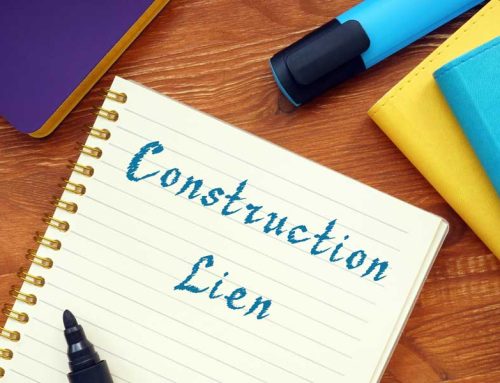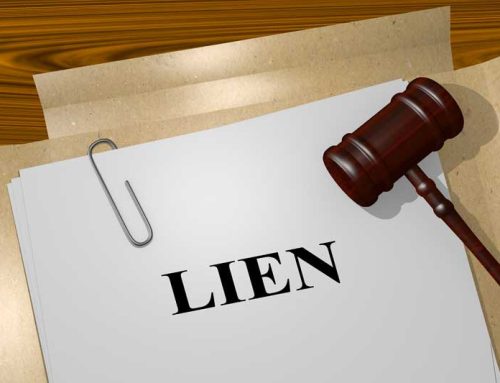Are you a contractor struggling to understand the difference between construction liens and collections? If so, you’re not alone. The world of construction law can be complex, and it’s easy to get confused when it comes to legal terminology and procedures. That’s why we’ve created this guide to help you understand the key differences between construction liens and collections. In this blog post, we’ll explain what each of these terms means, how they work, and when you might need to use them. Whether you’re just starting out in the construction industry or you’re a seasoned contractor looking to brush up on your legal knowledge, this guide is for you. So, let’s dive in and start exploring the world of construction liens and collections!
Introduction to Construction Liens and Collection
In the realm of lien collection, a construction lien is a critical instrument that contractors, subcontractors, and suppliers can utilize to ensure payment for their labor or materials provided to improve a property. This legal right provides a sense of security and protection for those in the construction industry in instances where they have not received compensation for the work they performed. When all other efforts to collect payment have failed, a construction lien can be an effective tool in the collection process. It allows for non-payment disputes to be resolved through a legal framework, rather than relying on informal negotiations. In sum, construction liens are a crucial element of ensuring that contractors, subcontractors, and suppliers are adequately compensated for the hard work they put into improving properties.
Similarly, to ensure successful debt collection, it is important for contractors, subcontractors, and suppliers to comply with the applicable state statutes that govern the lien filing process. Failure to adhere to these requirements could lead to a lien being deemed invalid and unenforceable. In addition, delivering a Notice to Owner is a crucial step towards securing rightful payment for services rendered. By giving notice of a lien filing, the owner can take steps to resolve any disputes before legal action is taken, potentially saving both parties time and money. Ultimately, understanding the ins and outs of the lien collection process can help ensure that contractors, subcontractors, and suppliers get paid for their hard work. For more info, visit: Construction Credit and Finance Group.
The Benefits of Using a Lien for Collection
When it comes to collecting debts, utilizing a lien can be an effective and secure method. A lien essentially grants the creditor a legal right to take possession of the debtor’s property until the debt is paid in full. This not only provides immediate leverage against the debtor, but also serves as a legal guarantee that the debt will eventually be paid. However, it is important to note that the process of obtaining and enforcing a lien can be complex and vary by jurisdiction. It is crucial that creditors follow proper legal procedures and seek professional guidance to ensure that they are acting within their legal rights. Overall, a lien can be a powerful tool for creditors seeking to collect outstanding debts while minimizing the risk of financial loss.
Liens are a powerful tool for debt collection. In fact, they provide more assurance than other forms of debt collection because they are legally binding and can be enforced by the court system if needed. A lien is a legal claim against property that grants the lien holder the right to take possession of that property if the owner is unable to pay off the debt owed. This means that if you have a lien on your property, you cannot sell or transfer ownership until the lien is satisfied. Additionally, liens can affect the credit score of the debtor and remain on record until the debt is paid off. Overall, liens are an effective and secure method for debt collection and can give creditors peace of mind knowing that they have a legal means of recourse in case of default.
Furthermore, liens are an effective tool for protecting a creditor’s interests in the event of non-payment or fraudulent activity. By placing a lien on a debtor’s property, the creditor can ensure that their funds are secure and that they will be compensated in the case of default. Liens also provide a legal framework for resolving disputes between creditors and debtors, helping to prevent costly court battles or lengthy negotiations. In essence, liens are an excellent tool for protecting your assets and ensuring that your rights as a creditor are upheld. Whether you’re a small business owner or a large corporation, utilizing liens for debt collection can help to safeguard your financial interests and minimize your exposure to risk.
Steps for Filing a Lien
If you are interested in pursuing construction collection, it is important to understand the initial steps involved in filing a lien. One of the first things to keep in mind is to have all necessary documentation in order before beginning the process. This includes any detailed contracts or agreements between the parties involved, as well as invoices and other financial documents that are directly related to the issue at hand. Without this documentation in place, it may be difficult to prove your case and ultimately collect the debt owed to you. Therefore, it is best to gather all relevant paperwork and ensure that everything is accurate and organized before moving forward with lien collection. By taking these necessary steps, you can increase your chances of success when it comes to resolving disputes and securing payment for your work. Ask the experts: Lienguard
In order to successfully file a lien and ensure its validity, it is crucial to conduct thorough research on applicable state laws and regulations. This is especially important for debt collection, as failing to follow the correct procedures can lead to legal complications and losses. By researching and confirming that all requirements for filing a lien in your specific geographic area are being met, you can be confident that the lien will be lawfully valid and enforceable. It is also worth noting that these requirements may vary from state to state, so it is essential to do your due diligence and get up-to-date information on the guidelines in your specific location. Overall, taking the necessary steps to understand and adhere to state laws and regulations is a critical part of any successful lien collection process.
Additionally, it is vital to note that liens are a powerful tool for creditors in collecting debts owed to them. By initiating a lien against the defaulted party, you are ensuring that you have legal protection and a security interest in the property or assets they owe you. It is important to follow the necessary steps and requirements to properly file a lien with your local county clerk’s office or court system. Failure to adhere to these steps could result in the nullification of your lien, leaving you without any legal recourse. Therefore, it is important to seek professional legal advice and guidance when dealing with liens to ensure that your rights as a creditor are protected. In conclusion, liens are an effective way to protect your financial interests and should be considered whenever you are faced with defaulting debtors.
Strategies for Avoiding Unpaid Debt After Filing a Lien
Lien collection is a significant aspect of construction collection, as it is necessary to ensure that you receive payment for the services you have provided. One way to avoid unpaid debt after filing a lien is by ensuring that the lien itself is properly documented and filed correctly. This means that the lien should be attached to a specific piece of property, which helps to ensure that your claim against the debtor is valid. Additionally, it is crucial to clearly identify the debtor and outline the terms of the financial agreement in the lien. This includes any agreed-upon project costs, payment schedules, and other relevant details. By following these steps and ensuring that your lien is properly documented and filed, you can significantly improve your chances of collecting the unpaid debt owed to you. Ultimately, taking a proactive approach to lien collection can help to safeguard your business against financial losses and ensure that you are paid for the work that you have performed.
Similarly, it is important to educate yourself before diving into the process of lien collection. A carefully drafted agreement in your contract or loan documents can significantly decrease the likelihood of unpaid debts. This agreement should clearly outline the payment terms and conditions, including the exact date when the payment is due and what happens if it is not received. It is crucial for both parties to fully understand and agree upon these terms to avoid any disputes or misunderstandings in the future. By following these simple strategies, you can ensure a successful lien collection process while maintaining a good relationship with your clients. Remember, patience and persistence are key when it comes to collecting unpaid debts.
Final Say
In conclusion, understanding the difference between construction liens and collections is essential for contractors who want to protect their rights and get paid for their work. While both are legal tools used to recover unpaid debts, they work differently and have distinct advantages and disadvantages. Knowing when to use each one can make a big difference in your ability to recover payment and avoid costly disputes. By following the tips and guidelines in this guide, you can become more confident and knowledgeable about the legal aspects of construction contracts, liens, and collections. With the right approach and professional support from legal experts, you can stay on top of your game and succeed in the challenging world of construction business.




